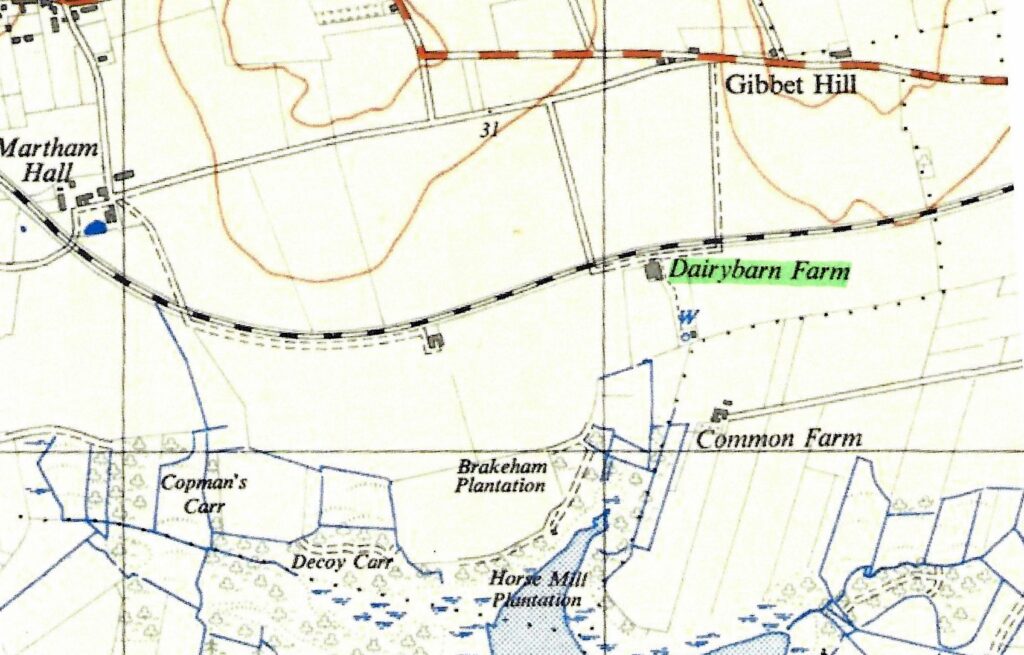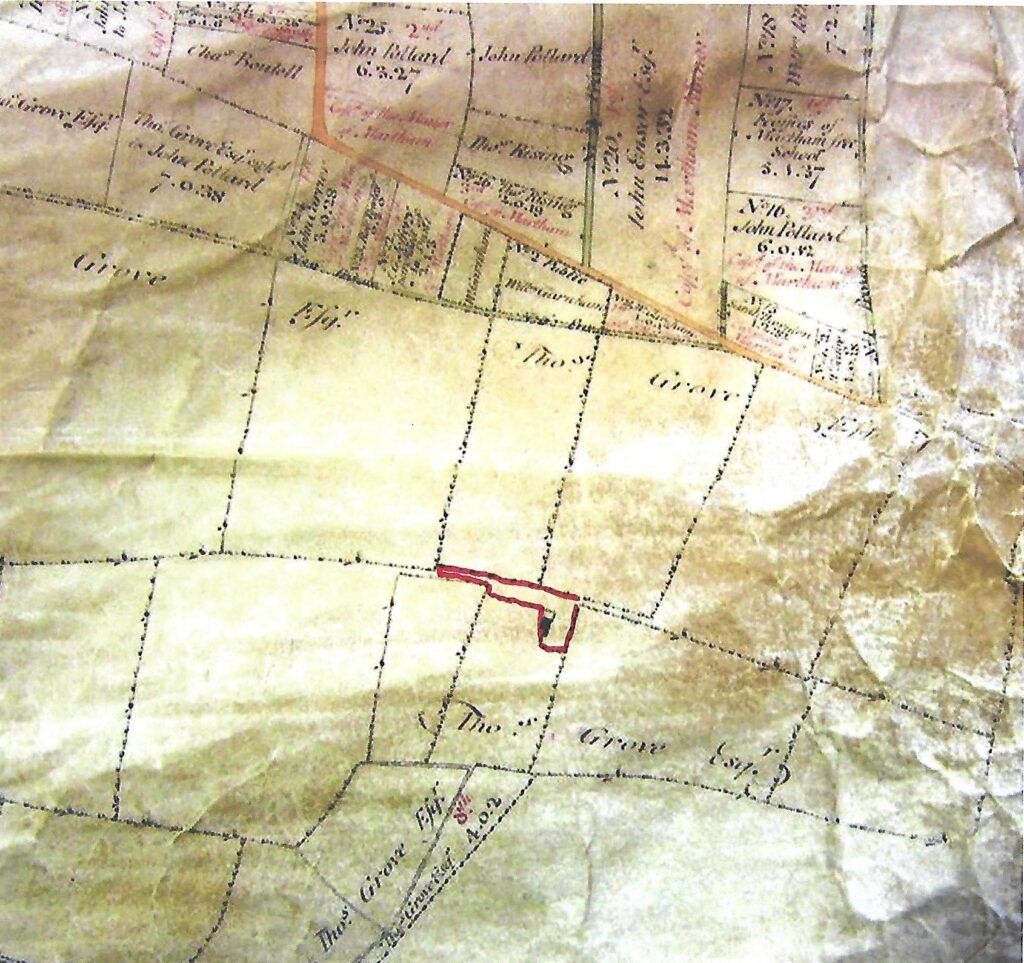Dairy Barn Farm, off Hemsby Road, Martham

Dairy Barn Farm once stood in a remote position between Gibbet Hill off Hemsby Road and Rollesby Broad in the middle of nowhere as shown on these maps of 1866 and 1939.


Remote though it is there are indications that the site has a long history. A building, probably just a barn, is shown there on the 1812 Inclosure Award map – see below – and this may have had even earlier use as it was very near the route between Ormesby Broad and the great barn at Hemsby that was used to store peat turves cut at Ormesby in the 14th century. Those diggings later became flooded to form Ormesby Broad. You can read more about medieval peat diggings (turbaries) by clicking HERE. In 1812 the farm was part of the Manor of Martham.

A barn is also shown there on the 1842 Martham Tithe Award map on plot No249. It stood on a plot of an acre owned by Thomas Grove the Lord of the Manor at the time.

By this time there was definitely a cottage on the site as well as a barn because it was shown as being occupied in the 1841 census and continuously in each subsequent census until 1911 as listed below. All the occupiers were agricultural labourers and would have been tenants of the Manor of Martham estate centred at Hall Farm, Hall Road.
1841 – Stephen and Mary Futter lived there. Stephen was born in West Somerton in 1799 and Mary, nee Goss, was from Cantley. By 1851 they had moved to Black Street, Martham.
1851 to 1881 – William Utting & his wife Maria and their family lived there throughout this period when it was referred to as Dairy House Farm. Willam was born in Martham in 1818 and Maria came from Hemsby where she was born in 1816. William died in 1889 and Maria in 1892.
1891 – Albert Brunson and his wife Anna had a spell at the farm but by 1896 had moved to Priory Plain, Great Yarmouth. Albert was from Martham and Anna was a Caister girl.
1901 – James & Charlotte Rouse were living at the farm. James was born in Hemsby in 1826 and Charlotte, nee Hubbard, was originally from Gorleston. They had a son, called Samuel, who lived at Hemsby Road and was a railway engine cleaner.
1911 – Samuel Rouse had moved into the property after his father died, Samuel was still a railway engine cleaner. Note that the railway ran past the doorstep of Dairy Barn Farm at the time. He was married to Rosannah (Rosa), nee Watson, and in 1911 they had been married for 29 years and had seven children, five of which were still alive. They lived there until at least 1920 when they were listed as being there in the electoral register for Martham that year.
Samuel’s mother, Charlotte, was also listed as living at the farm next door to her son as by this time a new semi detached pair of cottages had been erected to replace the former cottage. She was 77 and a widow but recorded as still being a farmer.
These were the occupiers according to census returns but in 1896 we get another glimpse into life at the farm when an advert appeared in The Norfolk News seeking a new tenant presumably when Albert Brunson left. The advert is shown below and a new double cottage had been built. The farm was still part of the Martham Manor estate which by 1896 was owned by John Love. The advert shows that the farm of 96 acres, 12 of which were pasture, could have only just been sustainable although it is possible the tenants did extra work for the Lord of the Manor at harvest time and, as it was called dairy barn, for caring for and milking his cattle.

The next record we can look at is the 1939 Register which was a sort of mini census carried out by the Government in preparation for the First World War. It confirms the existence of a pair of semi detached cottages. One was occupied by Herbert Percy Knights (born Hemsby in 1909) and his wife Ethel, nee Grapes who was born in 1907 also at Hemsby. Herbert was a self employed farmer.
John Lister Cooper and his wife Ellen, nee Dyble, lived next door. John was born in Suffolk in 1904 and Ellen in 1908 at Martham.
Today all that remains of the buildings is a tin roofed old barn and some ugly newer storage units. One end of the remaining main barn shows indications that another building was attached to it long ago but it is not known if these were the cottages or when they were demolished.




